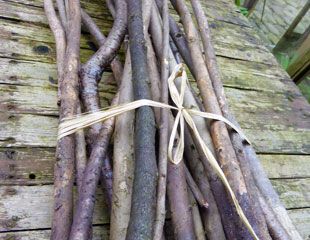Plant Stakes: The Ultimate Guide To Keeping Your Plants Standing Tall
Plant Stakes: The Ultimate Guide to Keeping Your Plants Standing Tall
Introduction
Plant stakes are a gardening essential for keeping your plants upright and healthy. They provide support for tall plants, prevent them from flopping over in the wind, and help them to grow strong and straight. There are many different types of plant stakes available, so you can find the perfect ones for your needs.
In this guide, we will discuss the different types of plant stakes, how to choose the right ones for your plants, and how to install them. We will also provide some tips on how to care for your plant stakes so that they last for many years.
Types of Plant Stakes
There are many different types of plant stakes available, made from a variety of materials. Some of the most common types of plant stakes include:
- Metal stakes: Metal stakes are strong and durable, and they can support even the heaviest of plants. They are often made from steel or aluminum, and they come in a variety of shapes and sizes.
- Wooden stakes: Wooden stakes are a natural and attractive option for plant support. They are less durable than metal stakes, but they are still strong enough to support most plants.
- Plastic stakes: Plastic stakes are lightweight and easy to use. They are not as strong as metal or wooden stakes, but they are still a good option for smaller plants.
- Mesh cages: Mesh cages are a good option for plants that need a lot of support. They are made from a wire mesh that is covered in a fabric, and they provide a sturdy framework for your plants to grow on.
- Trellises: Trellises are a decorative way to support your plants. They are made from a variety of materials, including wood, metal, and plastic. Trellises can be used to support climbing plants, such as vines and roses.
How to Choose the Right Plant Stakes
When choosing plant stakes, there are a few factors you need to consider:
- The size and weight of your plants: You need to choose stakes that are strong enough to support the weight of your plants. If you have large or heavy plants, you will need to use metal stakes.
- The type of plant: Some plants, such as tomatoes, need more support than others. If you have plants that are prone to flopping over, you will need to use stronger stakes.
- The environment: If you live in an area with strong winds, you will need to use stakes that are more sturdy.
- Your personal preference: There are many different types of plant stakes available, so you can choose the ones that you like the best.
How to Install Plant Stakes
Installing plant stakes is a simple process. Here are the basic steps:
- Choose the right location for the stakes. The stakes should be placed in the ground about 6 inches away from the plant.
- Push the stakes into the ground until they are about 12 inches deep.
- Tie the plant to the stake with a soft, flexible material, such as garden twine.
- Make sure that the plant is tied securely, but not too tightly.
How to Care for Plant Stakes
Plant stakes should be checked regularly to make sure that they are still secure. If the stakes start to come loose, you can re-tighten them or add more stakes. You should also inspect the stakes for any signs of damage. If the stakes are damaged, you will need to replace them.
Conclusion
Plant stakes are an essential part of gardening. They help to keep your plants upright and healthy, and they can also help to prevent them from flopping over in the wind. There are many different types of plant stakes available, so you can find the perfect ones for your needs.
With proper care, plant stakes can last for many years. By following the tips in this guide, you can keep your plant stakes in good condition and ensure that they continue to support your plants for years to come.
Are you looking for a way to support your plants and keep them healthy? If so, you should consider using plant stakes. Plant stakes are a great way to help your plants grow tall and strong, and they can also help to prevent them from toppling over in the wind.
There are many different types of plant stakes available, so you can find the perfect ones for your needs. Some popular types of plant stakes include wooden stakes, metal stakes, and plastic stakes. You can also find plant stakes that are specifically designed for certain types of plants, such as tomatoes or peas.
If you're not sure what type of plant stake to use, you can visit Garden Wiki for more information. This website has a comprehensive guide to plant stakes, and it also includes a section on how to choose the right stakes for your plants.
FAQ of plant stakes
1. What are plant stakes?
Plant stakes are upright supports that are used to keep plants upright and prevent them from falling over. They are typically made of wood, metal, or plastic, and they come in a variety of sizes and shapes.
2. Why do plants need stakes?
Some plants need stakes because they are tall and top-heavy, and they are prone to falling over in strong winds or heavy rains. Other plants need stakes because they have weak stems that cannot support their own weight.
3. What are the different types of plant stakes?
There are many different types of plant stakes available, including:
- Wooden stakes: These are the most common type of plant stake. They are relatively inexpensive and easy to find.
- Metal stakes: These are more durable than wooden stakes, but they are also more expensive.
- Plastic stakes: These are lightweight and easy to use, but they are not as durable as wooden or metal stakes.
- Bamboo stakes: These are a natural and sustainable option, but they are not as strong as other types of stakes.
4. How do I choose the right plant stake?
When choosing a plant stake, you will need to consider the size and weight of the plant, the type of soil, and the wind conditions in your area. You will also need to decide whether you want a temporary or permanent stake.
5. How do I stake a plant?
To stake a plant, you will need to:
- Choose the right type of stake.
- Measure the height of the plant and add 6 inches.
- Drive the stake into the ground so that it is 6 inches deep.
- Tie the plant to the stake with soft, flexible ties.
Image of plant stakes
- Wooden plant stakes: These are a classic and versatile option that can be used for a variety of plants. They come in a variety of sizes and colors, so you can find the perfect ones to match your garden.
- Metal plant stakes: Metal stakes are more durable than wooden stakes and can withstand more wind and weather. They are also a good option for plants that are heavy or that need extra support.

- Plastic plant stakes: Plastic stakes are lightweight and easy to insert into the ground. They are also a good option for plants that are shallow-rooted.

- Natural plant stakes: These stakes are made from materials like bamboo or willow. They are a good option for gardens that have a natural or rustic feel.

- Decorated plant stakes: These stakes are designed to add a touch of personality to your garden. They come in a variety of shapes, colors, and designs.


Post a Comment for "Plant Stakes: The Ultimate Guide To Keeping Your Plants Standing Tall"